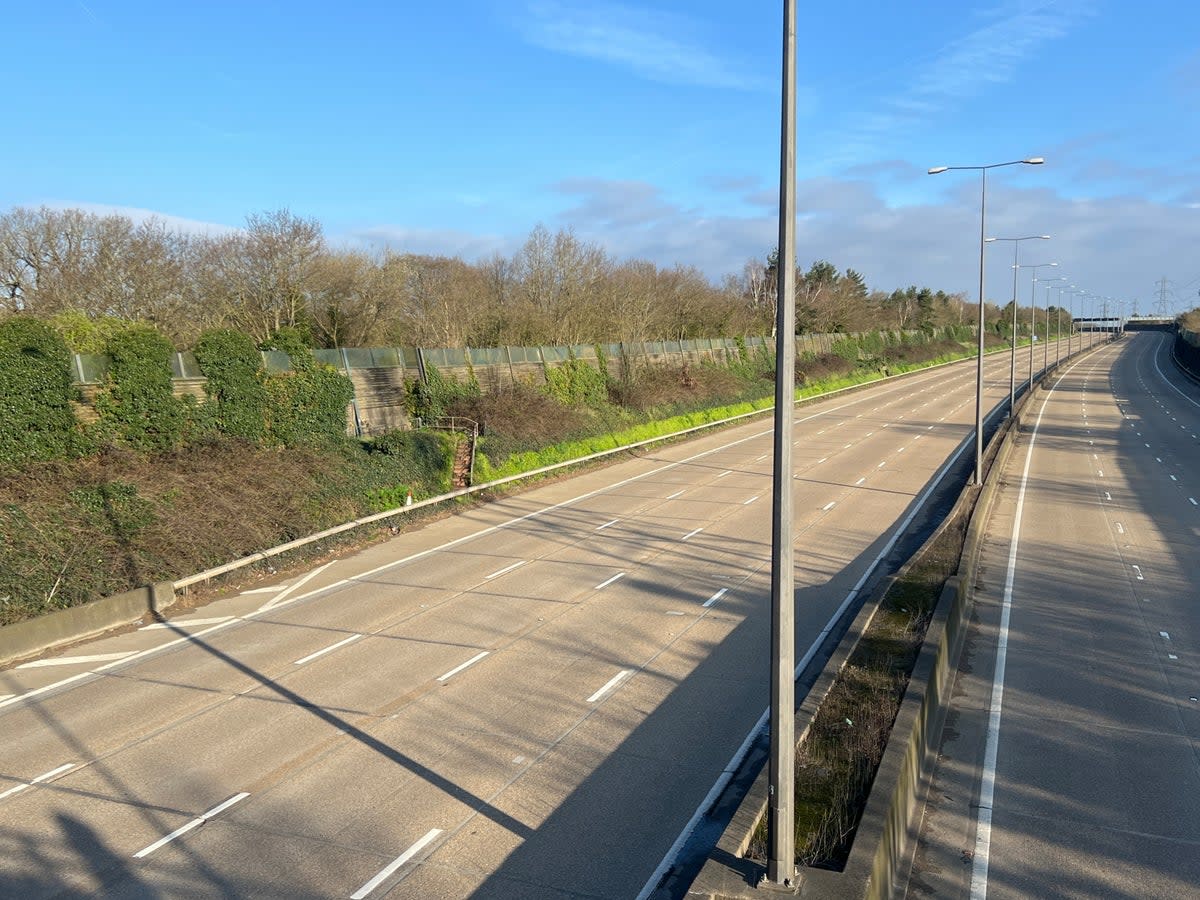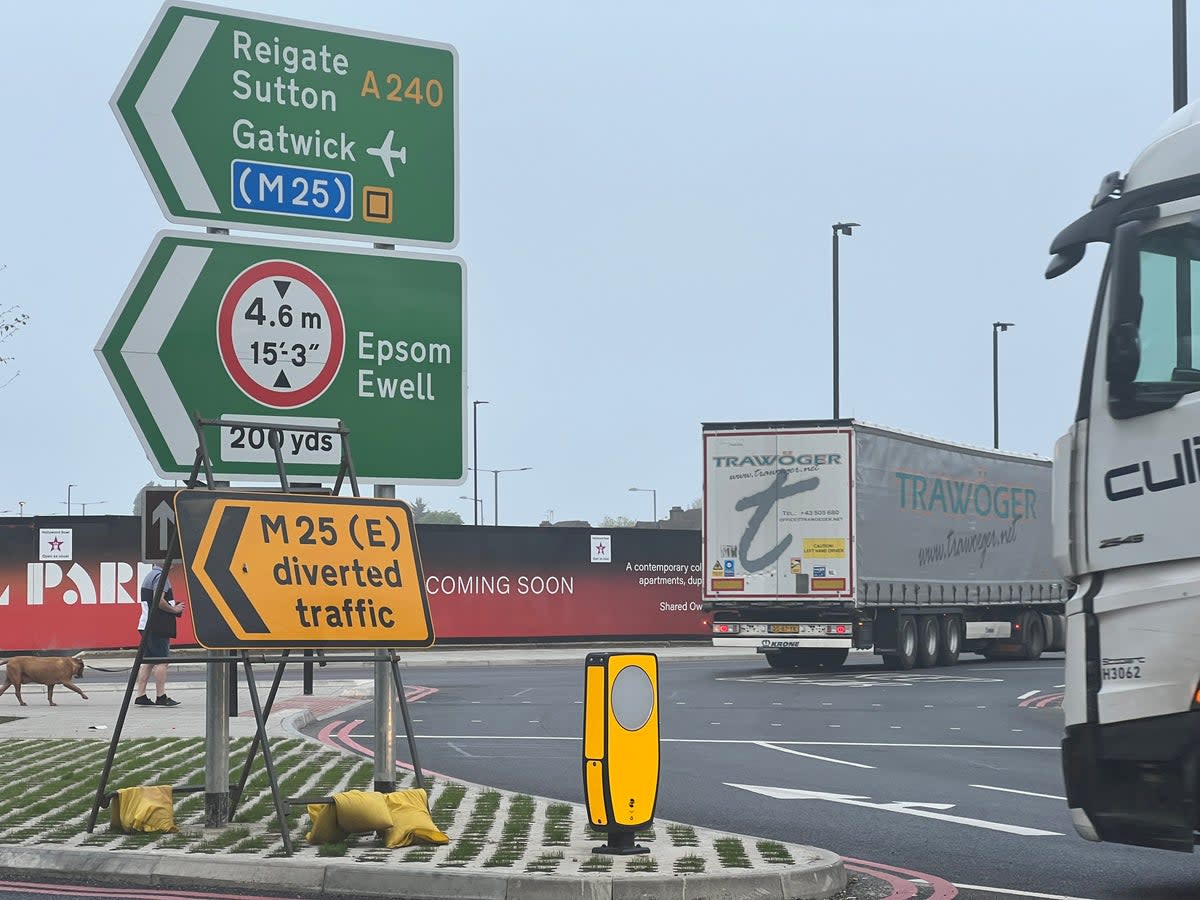Why is the M25 closed again this weekend and how bad is the traffic?

“Only travel if necessary”: that was the message from National Highways ahead of the second weekend shutdown of the M25.
A 10-mile stretch of London’s orbital motorway closed between junctions 9 and 10, southwest of the capital, from 9pm on Friday 10 May until 6am on Monday 13 May 2024.
Travellers accessing Heathrow and Gatwick airports are affected, as are many motorists heading for Channel crossings in Kent.
Junction 10, at Wisley, is the busiest interchange on the entire motorway. It links the M25 with the A3 trunk road between London and Portsmouth.
A 19-mile signposted diversion is in place. It takes drivers into part of the Ultra Low Emission Zone (Ulez). Vehicles that do not meet the required emissions standards need not pay the £12.50 daily charge so long as they keep to the official diversion route.
These are the key questions and answers.
Why is the motorway closed?
National Highways says the closure is necessary for “the installation of a bridge and gantry” as part of a £317 million project to improve junction 10 – which handles 300,000 motorists per day.
“Our improvements will reduce congestion, create a smoother flow of traffic and provide safer journeys for thousands every day,” National Highways says.
The organisation is promising:
A larger roundabout with extra lanes to increase capacity.
Free flow left turns at all four corners of the junction.
New and safer routes for cyclists, pedestrians and horse riders.
Improvements to the local environment and wildlife.
What is the official advice?
During the first weekend closure of the M25 in March, disruption was minimal. Before the event, Jonathan Wade, the National Highways executive responsible for the project, advised local people to “decorate the bathroom”.
There is concern that after the absence of massive traffic jams last time, the motoring public may be complacent and assume that roads in the area will be clear.
National Highways now says: “We’re grateful to all drivers last time who avoided the closure and completed their journeys in other ways. We urge you to do the same again.
“You should only drive through this area during this closure if your journey is essential as we expect there will be long delays during this time.
“Long distance and local diversions will be in place. Drivers should look to re-route or re-time their journey or use other forms of transport.”
What are the particular hotspots?
The key junction on the M25 closure diversion is the A3-A240 interchange at Tolworth in southwest London. It is a large and complex junction that is normally busy with local traffic and many bus services as well as vehicles joining and leaving the A3 trunk road between London and Portsmouth.
Early on the first morning of the closure, traffic was flowing fairly freely. But the diversion route passes close to Chessington World of Adventures, which is expected to be very busy over the weekend. The RHS Garden Wisley, close to junction 10, is open as normal.
Motorists who decide to take the train instead between London and Portsmouth will find that the main railway line is partly closed due to Network Rail engineering work, with rail replacement buses running. There are also rail closures between Reading and Guildford, and between Guildford and Ash.
Traffic on the rest of the M25 is likely to be much heavier; for example motorists from Birmingham or Oxford taking the M40 to London may decide to head for Gatwick via the northern and eastern sections of the M25, increasing the distance covered by almost 100 miles.

How can I travel between Heathrow and Gatwick airports?
This stretch of the M25 is part of the main route between the UK’s two busiest airports. Normally there are frequent coaches between Heathrow and Gatwick.
The easy public transport option is to take the Elizabeth Line from Heathrow to Farringdon in central London, which has a direct connection to Thameslink trains to Gatwick. The journey takes about 90 minutes.
National Express will run coaches between the two airports as well as longer links from Gatwick to other parts of the UK that use the M25.
Ed Rickard, network director for National Express, said: “Our dedicated teams have planned our coach service diversions to ensure all of our customers are able get to their destinations safely and as quickly as possible during the full closure of the M25 between junctions 9 and 10.
“The previous M25 closure in March was unprecedented, not having been seen since the 1980s, and yet our collective efforts meant that we were able to keep our coach network moving with customers experiencing minimal disruption to their journeys.”
The coach firm says people who are booked and wish to postpone their trips may do so free of charge.
Could the work overrun?
Most unlikely. The project bosses are well aware that finishing before the Monday morning rush hour is essential. There are a series of milestones place to make sure the M25 is open for business at the start of the working week.
Last time the work was completed, and the M25 reopened, eight hours ahead of schedule.
Are more closures likely?
Yes. Three more weekend closures will take place this year between July and December. Motorists are likely to be given several weeks’ warning.
